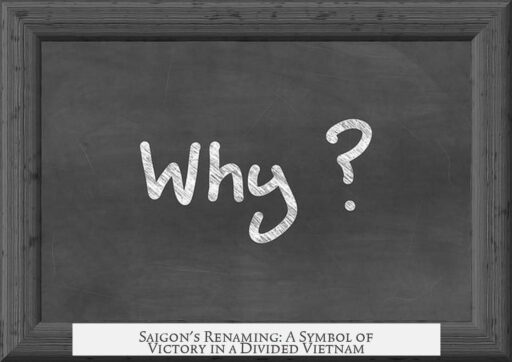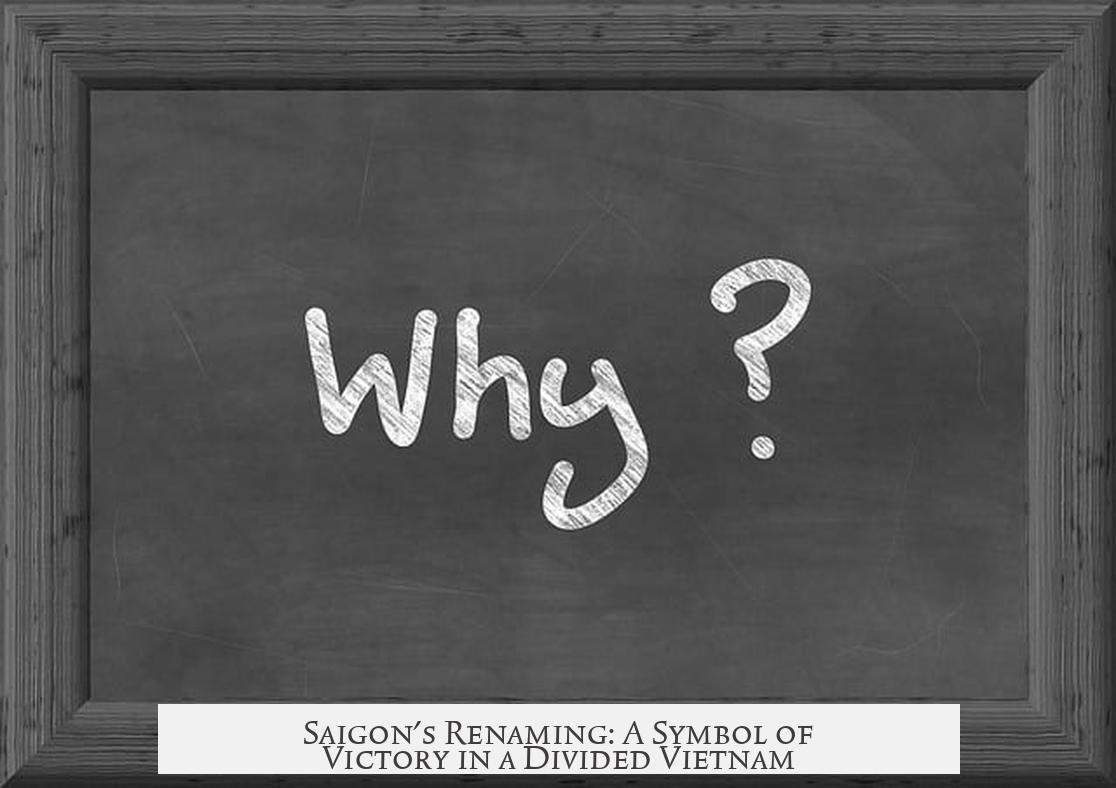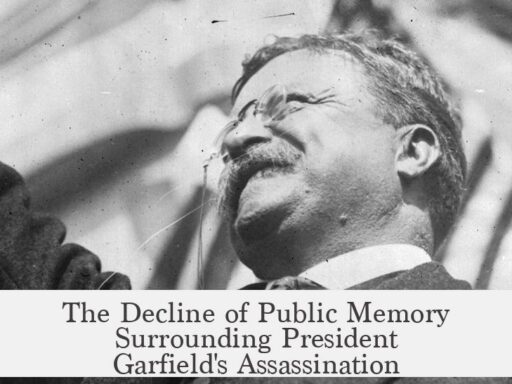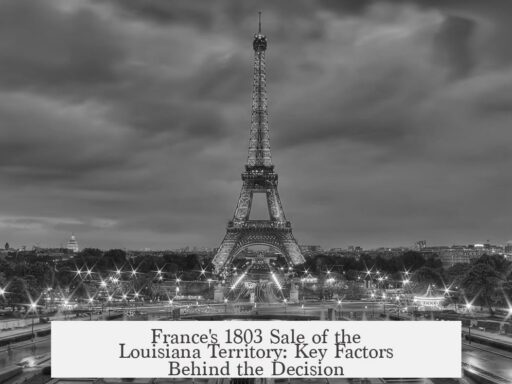Saigon was renamed Ho Chi Minh City to mark its capture by the communist forces during the Vietnam War, symbolizing the city’s liberation and unification under the new regime centered in Hanoi.
The communist government, headquartered in Hanoi, viewed the fall of Saigon on April 30, 1975, as a decisive victory. Renaming Saigon after Ho Chi Minh, the revered leader of North Vietnam and a symbol of Vietnamese independence, served to commemorate this triumph. It also reinforced the ideological integration of the South into the communist state.
This renaming acts as a powerful symbol. Saigon was effectively a “prize” won from the opposing South Vietnamese government. By changing its name, the North Vietnamese government stamped its authority and established a new identity aligned with their political vision. This is consistent with how conquerors throughout history rename cities they capture to signal regime change and dominance.
For example, New York was once New Amsterdam, renamed after its conquest by the English. Such acts help new rulers legitimize control and influence how inhabitants and outsiders perceive the city’s political reality.
| Aspect | Details |
|---|---|
| Original Name | Saigon |
| New Name | Ho Chi Minh City |
| Reason | Mark victory and liberation by communist forces |
| Government Base | Hanoi (North Vietnam) |
| Symbolism | Unification and communist ideology |
The renaming also helped unify the nation under a common historical figure. Ho Chi Minh represents national independence and socialism, ideals promoted by the Hanoi government after reunification. Thus, despite the capital being Hanoi, naming the former southern capital after Ho Chi Minh symbolized the city’s new role in the unified communist state.
- Renaming Saigon marked its capture as a communist victory.
- It symbolized unification of North and South Vietnam under communist rule.
- Such renaming is a historic practice to assert control.
- Ho Chi Minh’s name connects the city to national independence ideology.
- The capital remained Hanoi, but Saigon’s renaming highlighted political change.
Why Was Saigon Renamed After Ho Chi Minh When the Communist Government Was (Is) Based in Hanoi?

Simply put, Saigon was renamed Ho Chi Minh City to mark the North Vietnamese victory and to honor their revolutionary leader, Ho Chi Minh. This happened right after the communist forces captured Saigon in 1975. The fall wasn’t just a military win—it was a symbol of liberation and reunification under communist rule.
But that’s just the surface. Let’s dive deeper into why the renaming took place and what it truly means in the grand geopolitical and historical scheme.
Saigon: From Capital of the South to Symbol of Victory
Think about it: Saigon was the capital of South Vietnam. For decades, it stood as a symbol of anti-communist resistance, backed by the United States. When the People’s Army of Vietnam marched in and took control, the city’s identity was destined for a major shakeup.
To the communist government in Hanoi, capturing Saigon wasn’t just about winning territory. It meant “liberating” the south from what they called imperialist puppetry. So, renaming the city after Ho Chi Minh was their way of commemorating that liberation. Ho Chi Minh, the founding father of communist North Vietnam, embodies the ideals and leadership that fueled the revolution.
This wasn’t just a casual rename, either. It was a strategic move to rebrand the city—and to send a strong message both domestically and internationally: the new order was here, and it was personified by Ho Chi Minh’s legacy.
The Power of a Name: Saigon as a Victory Prize
Imagine winning a high-stakes game and putting your flag on the trophy. That’s essentially what happened here. To the communists, Saigon was the “prize” in a decade-long struggle. Changing the name stamped the city with their victory mark. It was a tangible symbol of a new era.
Should we see it differently? Not really. Throughout history, armies and governments have renamed places they took over. Examples reach from old European cities to American history—the very city of New York was once New Amsterdam, renamed by the English after they captured it from the Dutch.
This is not just symbolism for the sake of pride. It helps legitimate control, rewrite the cultural narrative, and embed new political power in the everyday lives of the citizens.
Hanoi vs. Ho Chi Minh City: A Tale of Two Political Hearts
One might ask: Why wasn’t the capital moved to Ho Chi Minh City if it was so important? Hanoi still serves as the seat of government. That’s partly due to historical legacy and a practical power structure established decades before reunification.
Hanoi was the historic capital of North Vietnam, where the communist government operated from. The city represents the ideological core of the nation’s leadership. Meanwhile, Ho Chi Minh City (the renamed Saigon) reflects the economic engine and cultural vitality in the south. This division of roles mirrors the country’s complex political reality.
In a way, Ho Chi Minh City wears two hats: It stands as a monument to communist triumph but also retains a unique identity shaped by its history as a southern metropolis with a vibrant economic life that often outpaces Hanoi’s.
Lessons From Naming Conquered Cities: More Than Just Words

The practice of renaming defeated cities goes beyond mere symbolism. It’s an act loaded with political psychology. Renaming eases the transition of power and seeks to erase or overwrite previous identities that challenge the new regime’s legitimacy.
Consider it a subtle yet grand gesture—changing a city’s name alters maps, travel documents, calendars, and everyday conversations. It forces residents to accept a new reality, even if reluctantly. Maybe this explains why some locals still call the city Saigon in casual talk, as a nod to their personal or familial histories.
This dual identity shows how history has layers and why pinpointing a single reason for the name change misses the nuanced truth.
What Can We Take Away From This?
- Renaming Saigon after Ho Chi Minh was a deliberate political act.
- It signified liberation in communist eyes and symbolized victory over the South’s former regime.
- The name change followed a long tradition among conquerors worldwide, marking control and rewriting history.
- Despite the communist government being based in Hanoi, Ho Chi Minh City stands as a tribute to the revolution’s southern triumph.
- The dual role of cities in Vietnam reflects the country’s complex political and cultural narrative today.
Next time you hear someone mention Ho Chi Minh City or still call it Saigon, remember: You’re hearing a story that blends historical conquest, political symbolism, and personal identity. This legacy shows how a simple act like a name change carries deep meaning and power. And it reminds us how geography and politics weave together to shape the world’s stories.




